2013 Chevrolet Malibu Review

When we first looked at the 2013 Malibu Eco, we came away awed by its incredibly quiet ride, but were otherwise unimpressed. Despite its mild-hybrid powertrain, it lagged behind its hybrid rivals in fuel economy and driving enjoyment.
FAST FACTS
| 1. All-new 2.5L engine with 197 hp and 191 lbs-ft of torque. |
| 2. New 2.5L gets 22 mpg city, 34 mpg highway and 26 mpg combined. |
| 3. Impressive safety features include 10 airbags and a 5-star NHTSA rating. |
| 4. 2.5L model starts at $23,150 and is $2,945 cheaper than Eco model. |
However, a new four-cylinder engine is now available on the Malibu, and is focused on being quiet, providing solid power, and netting good fuel economy. These might seem like simple goals, but if met they can help make the Malibu stand out in a crowded playing field.
This new 2.5L engine is available on the lowest trim Malibu, and is cheaper than the eAssist mild-hybrid Malibu Eco by about $3,000. While comparing that car to the other hybrids in its segment proved a lopsided affair, the Malibu 2.5L offers a closer head-to-head comparison with other base models in the mid-size family sedan segment such as the Toyota Camry, Hyundai Sonata and the all-new Nissan Altima.
The Malibu 2.5L is looking to continue the reputation of its mild-hybrid model. That means the expectations are set with a bunch of standard features, a quiet cabin and a comfortable ride. The new engine also hopes to breathe life into the car, in terms of power and fuel efficiency.
PLENTY OF POWER
The additional power that the new engine makes is a clear advantage over its mid-sized rivals – at least on paper.
At 197-hp and 191 lbs-ft of torque, the Malibu beats out the power numbers made by the base Camry, Altima and Accord. It’s just one pony shy of the Sonata and Optima twins, but bests them in torque. When driving, the car never feels out of breath, and will adequately pass slower vehicles on the highway.
While family sedans aren’t known for blazing fast acceleration, Chevrolet says that the Malibu can hit 60 mph in about 8-seconds, which is on par with other sedans in the segment. The reason it’s not quicker is the extra weight the Malibu lugs around, ranging from 200 to 300 lbs more than many of its competitors.
The car delivers its power smoothly, and briskly glides when pushed hard, rather than abruptly throwing passengers back in their seats.
SOLID FUEL ECONOMY, BUT SHORT OF RIVALS
That extra power (and weight) comes with a compromise. The EPA rates the Malibu 2.5L at 22/34/26 mpg city/highway/combined. While this is a better rating than the old 2.4L in the 2012 Malibu, it’s slightly lower than the ratings of the Camry, Accord, Altima and Sonata. The plus side is that the Malibu’s fuel economy numbers are actually attainable, and done without a frustratingly unresponsive Eco mode.
During city, highway and rural drives, our test car averaged closer to 30 mpg, higher than the EPA’s estimate.
INTERIOR TAKES NO HITS
Even as this is the base Malibu, the interior doesn’t lose a single point in comparison to the Malibu Eco. There are plenty of additional interior options that help the car scale up from plastic-y to plushy, and the car is fantastically comfortable throughout.
The Malibu also features Chevrolet’s MyLink infotainment system, which is responsive and fairly intuitive.
MyLink uses a 7-inch touch-screen display, which uses the much more responsive capacitive touch-screen technology. MyLink allows drivers to download address books, stream audio over BlueTooth and supports the playback of MP3 files from Flash memory drives. Additionally, through a smart-phone’s cellular connection, MyLink integrates with Pandora, and Sticher internet radio.
It is worth mentioning that there isn’t a GPS navigation display for the Malibu, and if drivers need some assistance getting somewhere, they should turn to GM’s OnStar service for help.
The Malibu’s information cluster is also well laid out, and the HVAC controls are easy to use and right at hand. Those weary of new systems like MyFord Touch, need not worry here.
Other features like a rear-view camera, lane-assist and parking sensors are all available as add-ons. The rear-view camera would prove to be the most useful add-on, since the Malibu feels so big, and reversing into a parking spot could use some guidance.
DRIVING IMPRESSIONS
The most important element of the Malibu comes in how quiet it is. Not only is the cabin nearly silent with little outside noise, but the new engine is nearly undetectable until you get into the higher rev range.
Helping make the car as serene as possible is the revised transmission. Work has gone into the six-speed automatic to help it shift quickly and smoothly.
In comparison to other players in the segment, the Malibu is slightly heavier, and it feels that way when driving. Steering lacks feeling and the car itself is resistant to quick changes of direction. Handling-wise the Malibu feels less floaty than the Camry, and slightly more responsive than a Sonata.
The Malibu’s weight is a bit more forgivable considering all the focus on safety that the car has. While the 2013 Malibu Eco has eight airbags as standard, this one is equipped with an additional two airbags. The car now features a Five-star NHTSA and Euro NCAP rating.
THE VERDICT
Yet another ding against the new Malibu is that it starts all the way at $23,150, which is more expensive than the Japanese and Korean competition. That number doesn’t always mean a lot in the real world once you compare standard equipment and add on some options, but a higher base price isn’t great marketing.
What the Malibu does have to offer is a solid amount of power and an impressively smooth and quiet ride. It’s also versatile, and can be optioned up to a more luxurious style. Undoubtedly an improvement over the previous ‘Bu, it’s not the massive leap forward most of the competition has made with their latest products.
A solid family sedan, the 2.5L engine still doesn’t offer enough of anything to help the Malibu jump anywhere past mid-pack in the segment. Rivals can boast the best price, the best fuel economy, the best reliability or the best style. The Malibu, however, is missing a unique identity to help it stand out, though perhaps the 2.0-liter turbocharged engine option coming this fall will help solve that.
LOVE IT
- More power than rivals
- Clean looks
- Unbelievably quiet
LEAVE IT
- Heavy feel
- Pricey
- Limited tech

Sami has an unquenchable thirst for car knowledge and has been at AutoGuide for the past six years. He has a degree in journalism and media studies from the University of Guelph-Humber in Toronto and has won multiple journalism awards from the Automotive Journalist Association of Canada. Sami is also on the jury for the World Car Awards.
More by Sami Haj-Assaad
















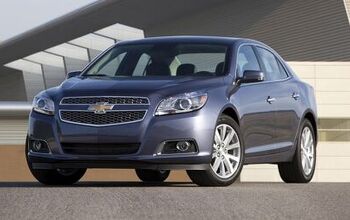




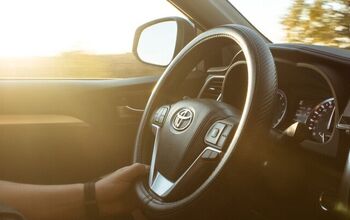



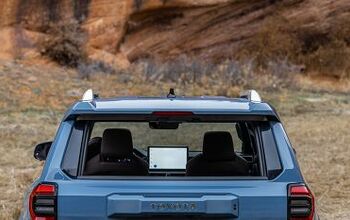

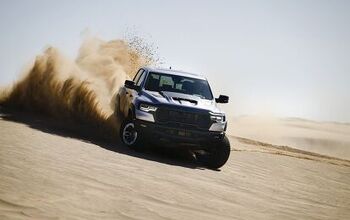


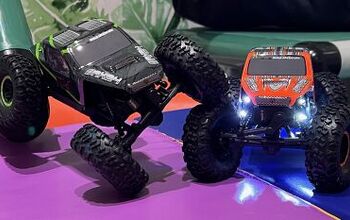
Comments
Join the conversation